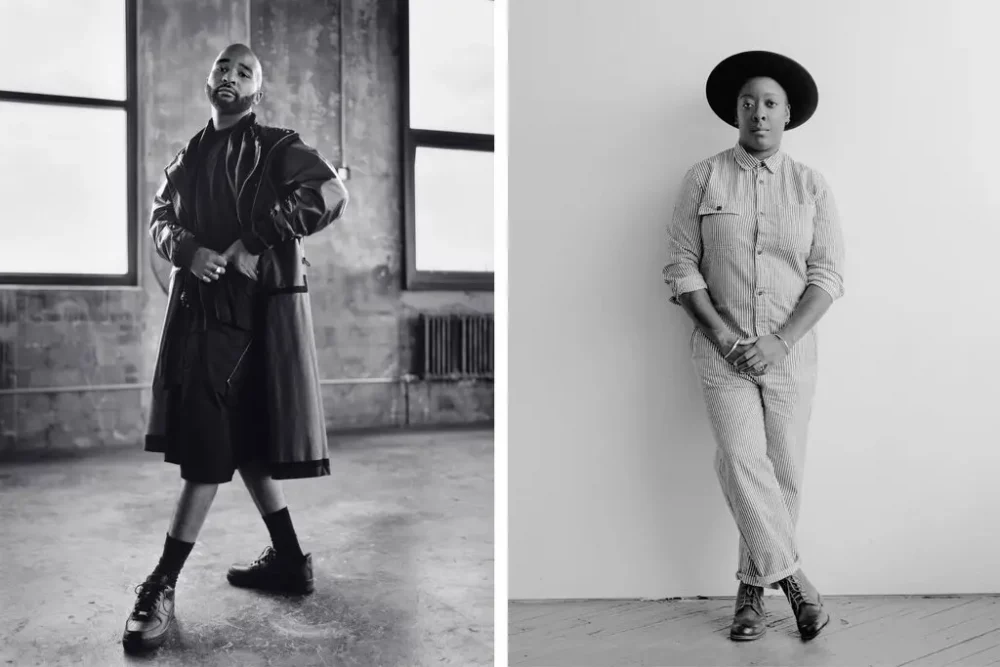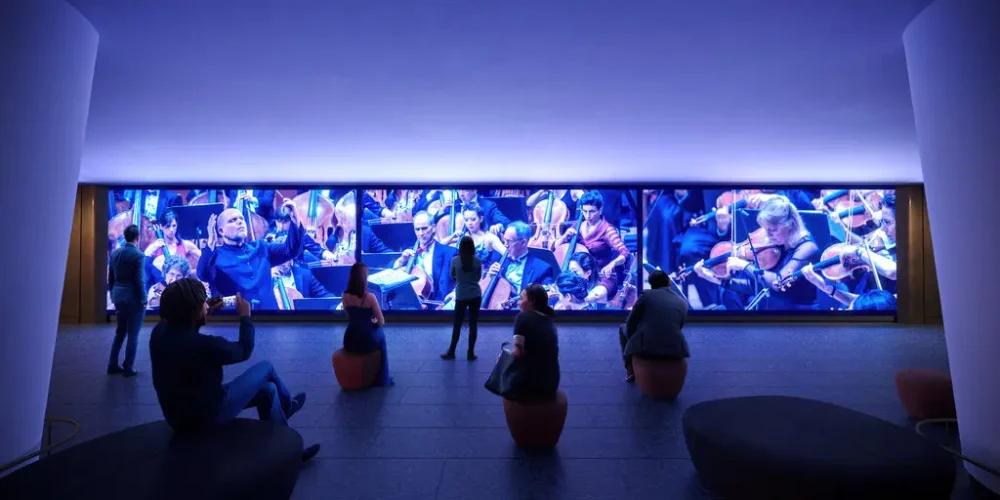
- Source: The New York Times
- Author: Hilarie M. Sheets
- Date: May 12, 2022
- Format: ONline
Artists Are Putting Their Stamp on Lincoln Center
In a partnership with the Studio Museum in Harlem and the Public Art Fund, works by Nina Chanel Abney and Jacolby Satterwhite will help reintroduce Geffen Hall this fall.

From left: Andreas Laszlo Konrath, via Jacolby Satterwhite and Mitchell-Innes & Nash; Daniel Dorsa for The New York Times
When David Geffen Hall reopens on the Lincoln Center campus this fall, two new artworks — by Nina Chanel Abney and by Jacolby Satterwhite — will be splayed across the 65th Street facade and a 50-foot media wall in the renovated lobby.
These highly visible pieces, commissioned by the performing arts center in partnership with the Studio Museum in Harlem and the Public Art Fund, are positioned to help reintroduce the longtime home of the New York Philharmonic to the city and will inaugurate a rotating program of visual artists invited to put their stamp on Lincoln Center.
“One of the overriding goals of the new David Geffen Hall has been to find ways to connect more meaningfully with outside — not just to open up but to reach out,” said Henry Timms, president and chief executive of Lincoln Center for the Performing Arts. “We’ve been very intentional about thinking about different voices, different audiences, more people seeing themselves at Lincoln Center. The Studio Museum was the perfect partner for that.”
For the museum, which has been organizing temporary installations of public art since 2016 in Harlem while its 125th Street building is under construction, this collaboration was “a great opportunity to extend our engagement in site-specific commissioned artwork,” said Thelma Golden, the Studio Museum’s director and chief curator. It also allows the museum to complement the work at Lincoln Center “to broaden and deepen and expand their program and the ways in which they engage audiences.” Golden pulled in the Public Art Fund for the organization’s resources and expertise in implementing large-scale public projects.
Together, the institutions developed the curatorial vision and identified the two prominent locations for the art — a 10,000-square-foot expanse on the north facade of the building and a new multiuse media wall running across the lobby. This space has been reconceived as a kind of living room, open to the public all day with beverages. Nonticketholders will be able to view the art on the media wall that will also broadcast the Philharmonic down to the lobby when it is playing upstairs. Abney, 39, known for her bold, large-scale paintings, and Satterwhite, 36, a multidisciplinary artist who combines digital media and painting, were selected from more than half a dozen artists of color invited to make site-specific proposals.

via DBOX
“That facade for so long was thought of as the blank back side of the building and is kind of hiding in plain sight,” said Nicholas Baume, artistic and executive director of the Public Art Fund. “It’s right there at that intersection of all these major streets and can express this concept that Lincoln Center wants to open itself up to the city and address some of that symbolic citadel-like podium elevation of the original ensemble of buildings.”
In a dynamic constellation of colorful stylized figures, symbols and patterns to be printed on vinyl and applied across a grid of 35 windows on that north facade, Abney will pay homage to San Juan Hill, a largely Black and Puerto Rican neighborhood that was demolished to make way for the 14-acre federally aided Lincoln Center project, which broke ground in 1959.
“I was interested to delve into the history and the amazing people who inhabited that neighborhood,” said Abney, who is working with the Schomburg Center for Research in Black Culture to study San Juan Hill, considered the birthplace of the Charleston and bebop, and home to musicians including the jazz pianist Thelonious Monk. “It’s acknowledgment and celebrating what was there.”
In tandem, Lincoln Center has commissioned the composer Etienne Charles to explore the neighborhood’s legacy in a piece, “San Juan Hill,” to be performed by the Philharmonic in the new hall for free on Oct. 8.
“This is part of a necessary engagement with our history,” Timms said. “This isn’t a one-off.”
In a poetic, digitally animated landscape that will unfold across the 50-foot media wall in the lobby, Satterwhite plans to tell a story about the past, present and future of the New York Philharmonic. “The history of Lincoln Center is very male and white — that’s what it’s perceived as,” Satterwhite said. He is working with archivists there to mine footage of conductors and performers of different races and genders working more at the margins of the Philharmonic, to be woven fluidly into a kind of pastoral concert with 100 student musicians and dancers from Alvin Ailey, LaGuardia High School and others that Satterwhite is filming.
“I want to reanimate the timeline that may traditionally be told, without any kind of hierarchy,” Satterwhite said. The pandemic, he feels, has offered an opportunity for “culture and society to reconfigure and reflect on itself. I want this piece to be very much about moving forward.”

